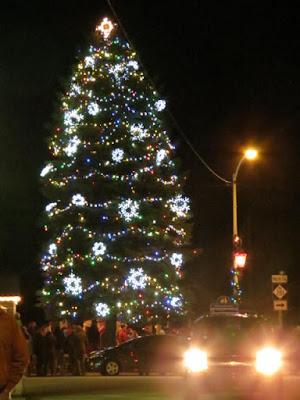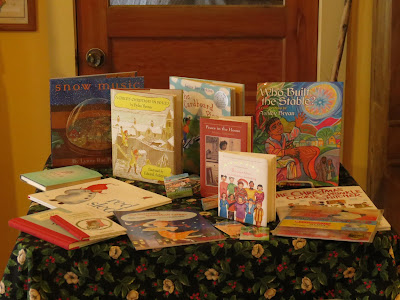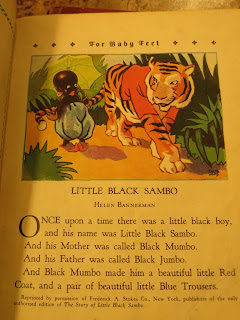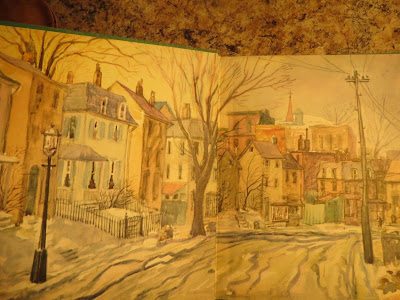I. Revisiting an Old Question
A while back -- and not for
the first time -- I was musing on the difference between novels and short stories. I revert to this subject again and again, in part because so many
modern fiction readers avoid short stories like the plague, and, as a bookseller,
I’m always trying to figure out why.
So many gifted writers work
in short forms, and you’d think that, with busy schedules and multiple demands
on limited time, readers would embrace the short story eagerly. Such is not my
experience as a bookseller, however, and it is not, with a few outstanding
exceptions, the experience of most writers trying to place short story
collections, either. I’ve heard writers blame agents and publishers for
treating novelists like stars and fending off short story collections, but
agents want what they can sell to publishers, and publishers want what the
public will buy. The question is why short stories are such a hard sell.
Because they are. So I’m continually looking at the forms themselves for clues
to an answer.
What I came up with in my
last musing session was that a short story is more like a movie, a novel more
like a long television series. Clearly, that distinction (whether you buy it or
not) is made from the reader/viewer’s point of view, but it hardly solves the
avoidance problem, since very few watchers of series programs avoid movies. I
guess my distinction gave a pitch for stories (“Try them!”) rather than
answering the question I’d posed.
The brilliant fiction writer
Bonnie Jo Campbell, in a recent interview, gave as analogy to the short
story/novel distinction the contrast between dating and marriage.
No need to be honest or consistent or thorough on a date—just be interesting. Mysterious is good on a date.
Flash fiction, she adds, is
like a one-night stand. Campbell sees the short story reader as taking a brief
dip into “a magical world of suspended disbelief,” easily entered, easily left
behind (a date), unlike the experience of being immersed in a novel (committed
to marriage).
Well, as good as that sounds,
I wonder. I believe in the characters and situations of good short stories as
much as those in good novels. They feel very real to me. Besides that, short
stories can have downright haunting power. (Campbell’s are definitely
haunting!) Continuing to push on her analogy, I’d say that even a one-night
stand can be a life-changer, for better or for worse. (“Novels can brilliant,
life-changing.”) “Trailing the novel’s
blood” into your real life after you lay the book down? A reader coming to the
last page of a short story has no guarantee she will not trail its blood
through her real life for days and weeks to come! Exiting the world of the
short story does not necessarily
mean leaving it behind, since that world can enter the reader and inhabit the
heart and mind in a most disturbing way long after the book has been closed.
II. Stumbling Upon a Path
“By appointment or chance” is
a good description of my reading life. Our reading circle discussions, review
copies, long-awaited books by favorite authors: all of these might be called
reading by appointment. The vast majority of my reading, however, falls into
the “by chance” category, especially since the majority of books in my bookshop
are used volumes. Chance is a lovely feature of life! While a planned experience
may disappoint or exceed expectations, the chance encounter carries no baggage.
A book comes to hand. I open it and begin to read. Either I set it aside or
continue. Not much lost either way.
[Digression.
This is for authors and publishers, something I have learned in my years as a
bookseller. The cover of a book must say “Pick me up!” The open book in hand
must say, “Don’t put me down!” I told this to Bonnie Jo Campbell, and she urged me to write it
somewhere, so here it is, and now it's yours to do with what you will.]
And so, not long ago, into my
hands came a little volume called The Reaper Essays. The Reaper
was a journal not of but about poetry. Criticism, that is. In the journal two
writers (both poets themselves), Mark Jarman and Robert McDowell, created a
persona from which to expound their views on modern poetry.
Most fundamentally, they
decried the absence of narrative, and they were nothing if not prescriptive.
The first of their ten demands (“How to Write Narrative Poetry: A Reaper
Checklist”) was for a poem to have a beginning, a middle, and an end.
Just as it is hard to get the whole story, it is hard to allow a story to tell itself. Poets become enamored of a segment, an anecdote, and are content with nothing more. When this occurs, like the detached tail of a lizard, the story just wriggles and dies.
That, you understand, is a
prescription for narrative poetry and criticism of modern poetry the authors
see as failing, from two writers. Their view is not the view of the literary
majority of critics (and how would it pertain to something like haiku?), but it can hardly be dismissed as uninteresting,
uninformed, or incoherent. The entire book of essays is one I recommend to any
writer of poetry or prose. Agree
of disagree, you will find food for thought.
Okay, now fast forward a
couple of days, when my new issue of New York Review of Books (January 14, 2016) arrives and turn to a review by
Charles Baxter of a new volume of short stories, Visiting Privilege: New and
Collected Stories, by Joy Williams.
Baxter examines the short fiction in Williams’s book through the lens of Frank
O’Connor’s The Lonely Voice: A Study of the Short Story, first published in book form (earlier O’Connor gave
lectures on the subject) in 1963. Baxter seems to agree with O’Connor’s claim
that “we do not identify with most short-story characters.” (I’m not sure about
that, but for the sake of argument....) O’Connor believed short fiction to be,
as O’Connor puts it, “a more private art than that of the novel,” its
characters “more solitary, isolated, and uncommunicative,” the main feeling
delivered, therefore, that of loneliness.
Baxter goes from there to the
stories in Visiting Privilege,
narratives he finds thriving on
...impulsive action that comes out of nowhere, that is unpremeditated, unplanned, and unconsidered and is therefore inexplicable.
Baxter notes that short
stories don’t have time to develop lengthy histories.
But if you cut out much of a character’s history, you also cut out much of his motivation for action. ...[W]ith the contraction of narrative time, and with the character’s past chopped off and a possible future truncated or missing altogether, the protagonist simply acts, going from here to there without entirely grasping why she did what she did and often having no idea of how she ended up where she is now. She experiences the tyranny of the present presiding over an obliterated past.
I should confess that I have
not yet read any fiction by Joy Williams. I will in the near future. My
interest today, however, is the way her stories are characterized by Charles
Baxter.
A few years ago I devoted a
winter to writing fiction and achieved a complete draft of what I called a
“cycle” of ten short stories (still homeless, by the way) linked by a common
setting. More than one reader was intrigued and pleased while reading
individual stories but ultimately frustrated by not having any answer to the
question, “Then what happens?” I
felt the question was unfair. These were short stories,
not novel summaries!
But now, having read Jarman
& McDowell, and in the wake of chewing over the Baxter review, looking back
over my own short story collection and what I still think of as the most successful poem I ever wrote (that's my opinion and perhaps only mine) and recalling conversations
with bookstore customers who shook their heads and told me, “I don’t like short
stories,” I think I’m finally getting a handle on what frustrates modern
readers about the short story form.
III. My Tentative, Perhaps Temporary “Conclusion”
In terms of narrative, a
modern short story is all middle.
The reader of a modern short
story is plunged willy-nilly into a situation, shoved up against strange,
unfamiliar characters, shaken up and spun around, and then left by the side of
the road. Some short fictional encounters are gentler, and some much more
violent, but the common denominator, I believe, is absence of beginning and
end. That is, introduction to
character or characters and resolution to the situation are equally lacking.
Metaphorically, if not
actually, in a short story someone we know nothing about has been tied up and
thrown in the water. We see a flailing about, a struggle to survive. We begin
to fear. And then the lights go out, and the curtain comes down. How did the
character come to be in this situation? Will he or she survive? How? We have no
idea.
Let me be clear. Please! I am
not faulting the modern short
story or saying that every story should have a beginning, middle, and end. It is what it is, as the young
people say, and a raw slice of fictional life can be insightful as well as
brilliant. I would not wish the best of our modern short story writers to
abandon what they do or tailor their work into something else. What I’m going back to, yet again, is my question
(which is really only one question but can be phrased many different ways)
about audience: Why is the audience for short stories not larger? Why do
more people not read short stories? Why do so many readers consciously avoid
short fiction?
We are – and we are
constantly told that we are – story-telling animals. “Tell me a story” is the
child’s constant refrain. Finding meaning to one’s life is largely a matter of
being able to see one’s life as a coherent story. Every culture is shaped by
its stories.
In so many ways, the cutting
edge of modern Western culture has left telos behind. Science concerns itself with how and no
longer asks why. Evolution, we are told, is not purposeful but blind. Hansel
and Gretel and Little Red Riding Hood will not be coming back out of the woods.
And yet the yearning of our species for the “whole story” remains. We would not
be satisfied to wake with no memory and to live with no vision of a future, and
that dramatic, narrative arc --
from beginning to end -- is clearly what readers continue to hunger for in
fiction, however that hunger may be characterized as unsophisticated by those
on the cutting edge.
Perhaps we can do without a
fictional beginning more easily than we can sacrifice the end. Plunge us
directly into the story with the first sentence, and we’ll find our way. That
works. What’s hard is that being left on the side of the road with no words of
parting. It is not a question of authors
manipulating endings to satisfy readers, either, because a manipulated end is
as unsatisfying as or worse than no end at all.
Again, I am neither
criticizing nor prescribing but simply trying to understand what is missing in
the short story experience for so many readers, and I think I’ve finally hit
upon it. What do you think? I really want to know!
But now, in closing, to veer
into prescription, I still encourage readers to be adventurous and try the
short story experience! When you travel, you wouldn’t turn down interesting street
food because it isn’t a five-course meal, would you? Or, if a different analogy
will better serve my purpose, don’t expect the short story to be a trip from
Point A to Point B. Think of it instead as an exciting carnival ride –
frightening and exhilarating at the same time.

































